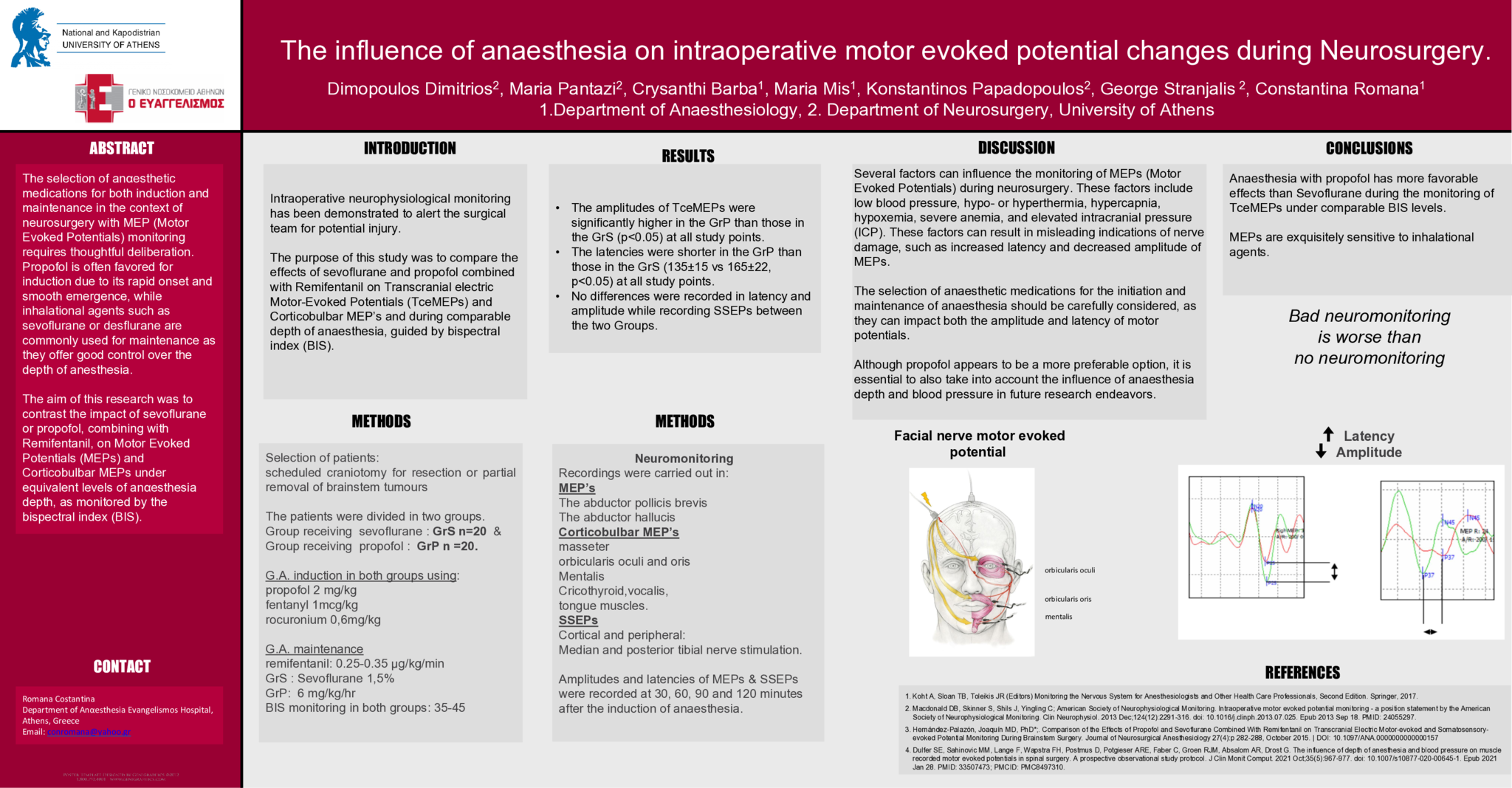Background: Intraoperative neurophysiologic monitoring has been demonstrated to alert the surgical team to potential injury and can also be used to detect injuries. The purpose of this study was to compare the effects of Sevoflurane and Propofol combined with Remifentanil on Motor Evoked Potentials from cranial nerves and lower limbs during comparable depth of anaesthesia, guided by bispectral index (BIS). Methods: 40 consecutive patients scheduled for brainstem surgery, after informed consent, randomly assigned to two groups received either Sevoflurane 1.5% (GrS n=20) or Propofol (GrP n=20) at an effect site concentration of 25 μg/ml for maintenance of anaesthesia. Remifentanil was administered to both groups at a rate of 0.25 to 0.35 μg/kg/min. Corticobulbar Motor Evoked Potentials (Co-MEPs) recordings were carried out in the masseter, orbicularis oculi, orbicularis oris, trapezius and tongue. Additional MEP’s recordings from lower limbs were elicited from anterior tibialis muscle. Amplitudes and latencies of MEPs were recorded at 30, 60, 90 and 120 minutes after the induction of anaesthesia. Results: BIS values remained in the 35 to 50 range. The amplitudes of Co-MEPs and MEPs were significantly higher in the GrP than those in the GrS (p<0.05) at all study points, where the latencies had no significant difference. Conclusions: Anaesthesia with Propofol has more favorable effects than Sevoflurane during the monitoring of Motor Evoked Potentials from cranial nerves and lower limbs under comparable BIS levels. MEPs are exquisitely sensitive to inhalational agents.




